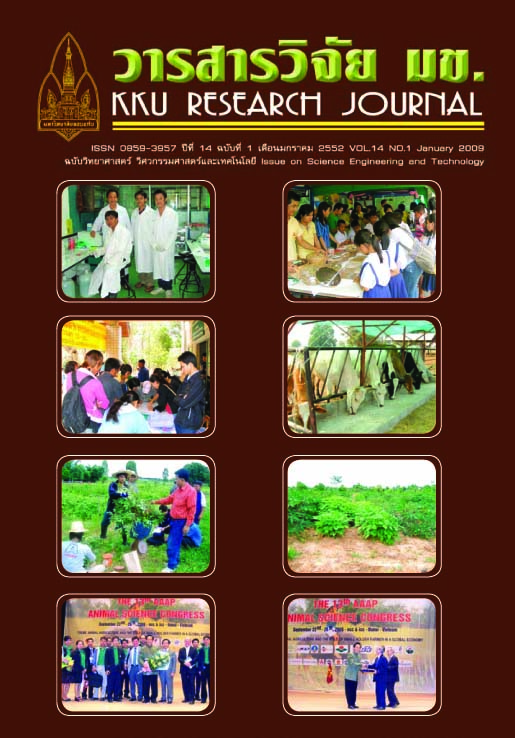Wastewater treatment from community hospital: case study of soil treatment (Thai)
Main Article Content
Abstract
The objective of this research is to study the characteristics of wastewater and soil before and after treatment of wastewater by soil. Na Chueak community hospital at Maha Sarakham province, a 30 bed hospital, is the case study site. Wastewater characteristics were studied in terms of impurity reduction such as COD, SS and TKN. Regarding soil characteristics, bulk density and saturated hydraulic conductivity were determined. Both wastewater and soil samples were collected at two stages, before and after treatment by soil. The results showed that the wastewater values (COD, SS and TKN) after soil treatment were lower than the values before treatment.These lower values after flow through the soil treatment method follow the standard criteria for domestic wastewater of the Public Health Ministry. For soil characteristics, after treatment, bulk density was lower while saturated hydraulic conductivity was higher. This study shows that soil materials after treatment were more porous and tilth, well aerated, well drained and more permeable. Moreover soil treatment can reduce the impurities of the wastewater well, is convenient and less expensive for maintenance.


